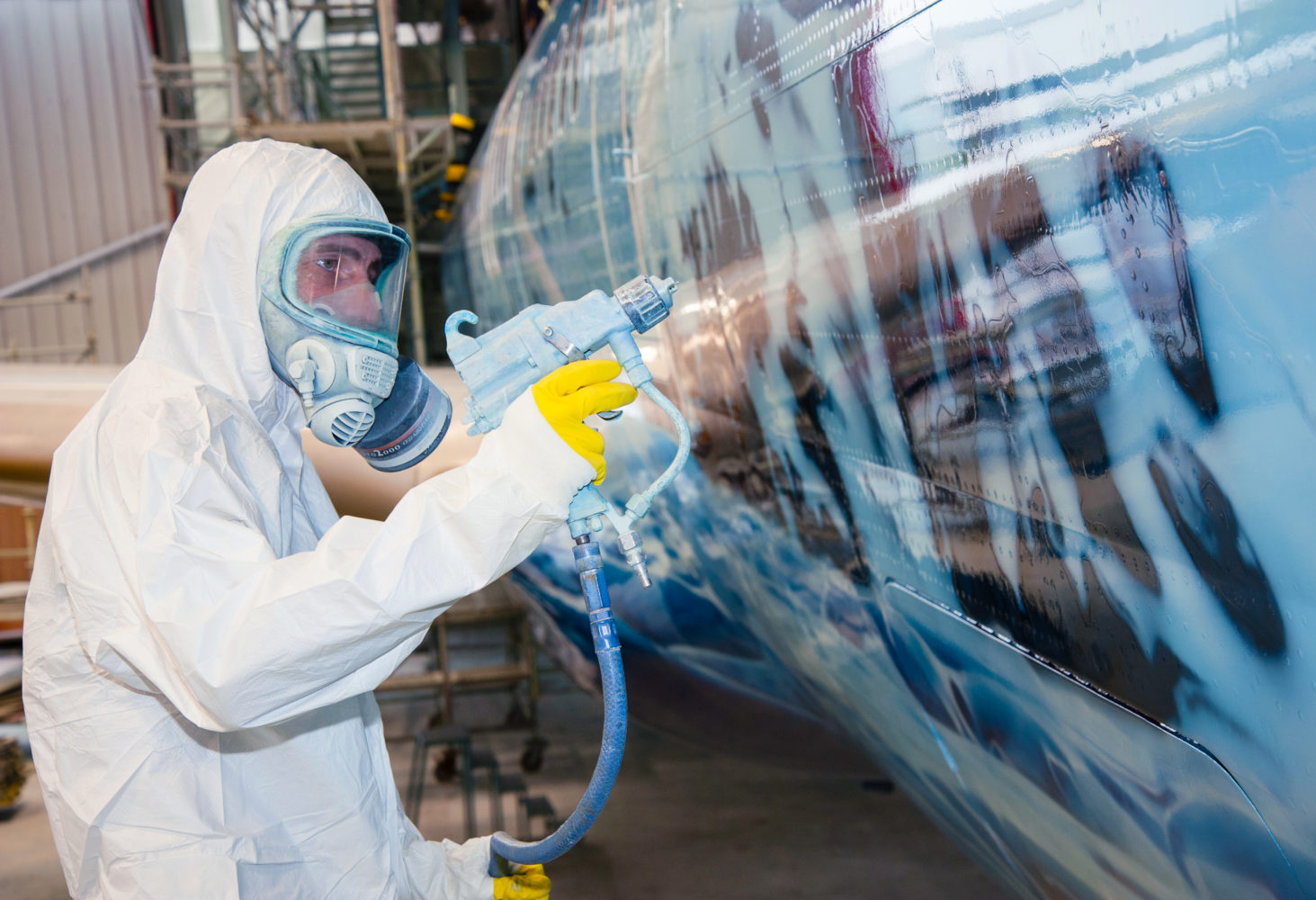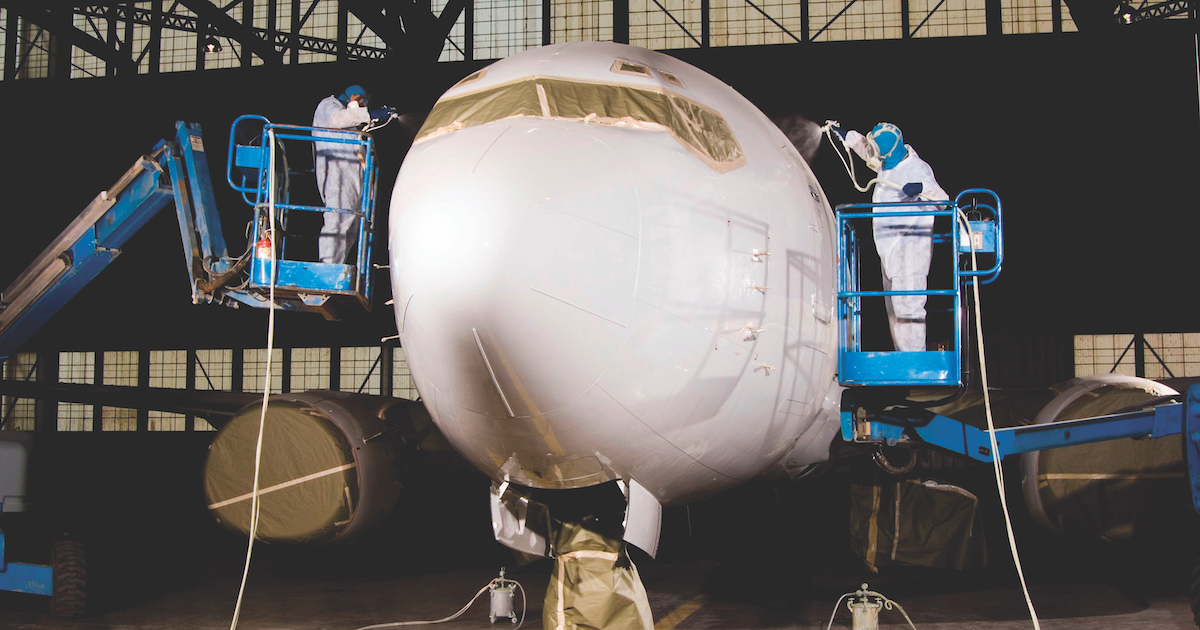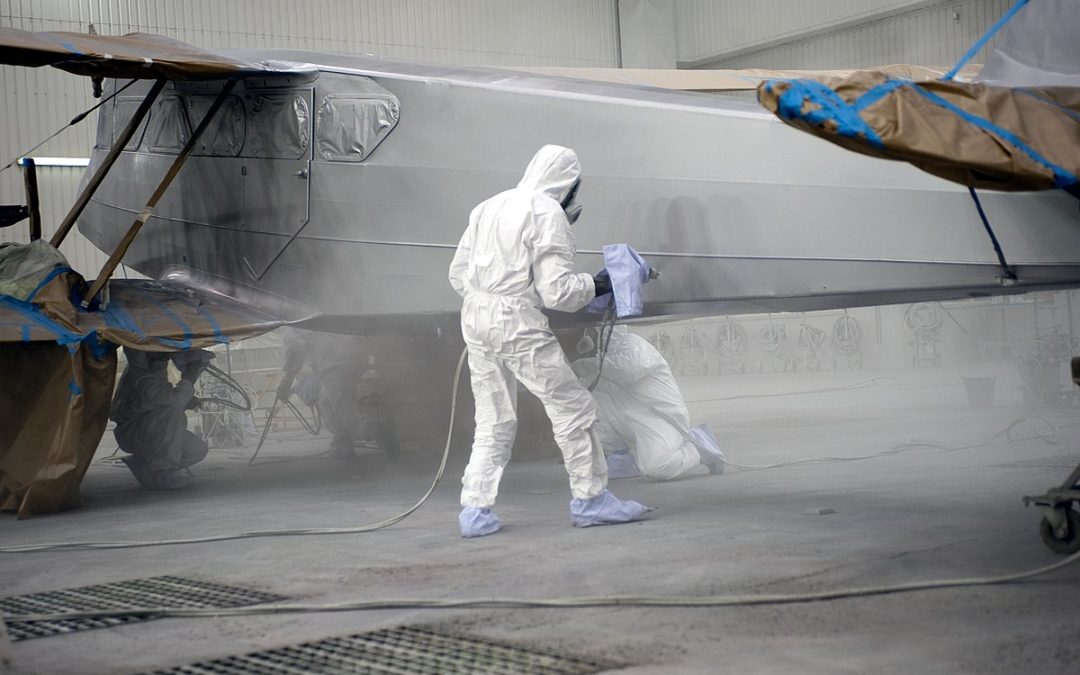In todays competitive aviation industry, every detail counts. Investing in flawless aircraft paint is one effective way to ensure your aircraft stands out from the rest. Whether you are an airline operator, a maintenance professional, or an aviation enthusiast, understanding the significance of high-quality paint and its impact on performance and aesthetics is crucial.
The goal of aircraft painting extends beyond mere aesthetics. It involves preserving the structural integrity, improving aerodynamic efficiency, and ensuring the longevity of the aircraft. In this article, we will delve into the intricacies of aircraft painting and why it is essential to soar above the competition with a flawless finish.

Understanding the Importance of Aircraft Paint
The first impression an aircraft makes is often dictated by its paint job. A well-painted aircraft exudes professionalism, instills confidence, and reflects the meticulous care and attention given to its maintenance. But the importance of aircraft paint goes far beyond aesthetics.
Aesthetics and Branding
Aesthetics plays a crucial role in the airline industry. A well-painted aircraft can attract passengers, create brand recognition, and foster loyalty. In a competitive market, standing out visually can make all the difference. The right aircraft paint can convey the brands identity, mission, and values.
Corrosion and Protection
A high-quality paint job protects the aircraft’s surface from harsh environmental conditions, such as UV rays, moisture, salt, and pollutants. This protective layer helps prevent corrosion, which can compromise the aircraft’s structural integrity and lead to costly repairs.
Aerodynamic Efficiency
Smooth and flawless aircraft paint can enhance aerodynamic efficiency. It reduces drag, thereby improving fuel efficiency, which is crucial for cost-saving and environmental sustainability. Aerodynamic efficiency is not only about performance but also about operating with minimal energy wastage.
Choosing the Right Paint for Your Aircraft
Choosing the right paint involves careful consideration of various factors such as paint type, color, durability, and cost. Aircraft operators need to work with professional painters to ensure a flawless and durable finish. Here are some key factors to consider when choosing the right paint for your aircraft:
Paint Composition
The top coatings usually consist of polyurethane paints, known for their durability, flexibility, and resistance to various chemicals and environmental factors. These paints maintain their gloss and color even under extreme conditions.
Color and Design
The color and design of an aircraft convey much more than visual appeal. They can enhance visibility, improve safety, and communicate the aircraft’s purpose. For instance, emergency aircraft often use vibrant colors for quick identification, while commercial airlines opt for design that resonates with their brand.
Durability and Longevity
Durability is a critical aspect when choosing paint. Aircraft are exposed to diverse weather conditions, temperature fluctuations, and airborne particles. Therefore, a high-quality paint that can withstand these factors without deterioration is imperative.
The Aircraft Painting Process
The aircraft painting process is complex and requires skilled professionals and the right facilities. Heres a step-by-step look at how aircraft are painted:
Preparation and Cleaning
Before applying new paint, existing paint or coatings are stripped using chemical or abrasive methods. This ensures a clean and smooth surface for the new paint to adhere to.
Priming
After cleaning, the aircraft’s surface is treated with primers to ensure proper adhesion of the topcoat. Primers also provide an additional layer of protection against corrosion.
Painting
The actual painting involves multiple layers, including preliminary coats, intermediate coats, and a final glossy topcoat. Each layer enhances protection and ensures a smooth and durable finish.
Detailing and Inspection
Once the paint is applied, detailing is done to ensure no areas are missed, and the finish is flawless. After this, a thorough inspection is conducted to guarantee the quality and uniformity of the paint job.
Maintenance and Care for Painted Aircraft
Maintaining a painted aircraft involves regular inspections, touch-ups, and proper care to keep the paint in top condition. Proper maintenance ensures the longevity of the paint job and the overall health of the aircraft.
Regular Inspections
Regular inspections help identify any paint deterioration, such as cracks, chips, or fading. Early detection allows for timely touch-ups and prevents further damage.
Cleaning and Touch-ups
Frequent cleaning with appropriate cleaning agents prevents the buildup of dirt and grime, which can degrade the paint. Touch-ups and repairs should be performed by professionals to maintain the paint’s quality and appearance.
Protective Coatings
Applying protective coatings such as wax or sealants can enhance the longevity of the paint. These coatings add an extra layer of protection against environmental factors and maintain the aircraft’s glossy finish.
Technological Advancements in Aircraft Paint
Advancements in technology have revolutionized aircraft painting, leading to more efficient and environmentally friendly methods. These advancements have also resulted in better-quality paints with enhanced properties.
Eco-friendly Paints
The aviation industry is increasingly adopting eco-friendly paints with low VOC (Volatile Organic Compounds) levels. These paints reduce the environmental impact while maintaining high performance and durability.
Advanced Application Techniques
Technological advancements in paint application techniques, such as HVLP (High Volume Low Pressure) spraying, ensure a smoother and more even coat. These techniques reduce paint wastage and environmental pollution.
Smart Coatings
Smart coatings with self-healing properties, temperature regulation, and anti-static features are being developed. These coatings enhance protection, improve performance, and reduce maintenance costs.
The Impact of Flawless Aircraft Paint on Performance
A flawless paint job significantly impacts the aircraft’s performance, from enhancing aerodynamic efficiency to reducing fuel consumption and improving operational safety.
In the competitive aviation industry, where performance and aesthetics go hand in hand, investing in high-quality paint is not just a cosmetic choice but a strategic decision. A well-maintained, beautifully painted aircraft not only reflects the brand’s commitment to excellence but also ensures longevity and operational efficiency.
Conclusion
Soar above the competition with flawless aircraft paint by understanding the importance, choosing the right paint, following the right processes, maintaining it properly, and leveraging technological advancements. A well-painted aircraft is a blend of art and science, representing the pinnacle of excellence in the aviation industry.
For more insights on the importance of aircraft paint and professional services, read this article.

FAQs
Why is aircraft paint important?
Aircraft paint is important because it not only enhances the aircrafts aesthetics but also protects its surface from environmental factors, preventing corrosion and ensuring aerodynamic efficiency.
How often should an aircraft be repainted?
Typically, aircraft are repainted every 5 to 7 years, depending on the usage, environmental exposure, and the quality of the previous paint job.
What are eco-friendly paints, and why should they be used?
Eco-friendly paints have low VOC levels, reducing environmental impact while providing high performance and durability. They are essential for promoting sustainability in the aviation industry.
